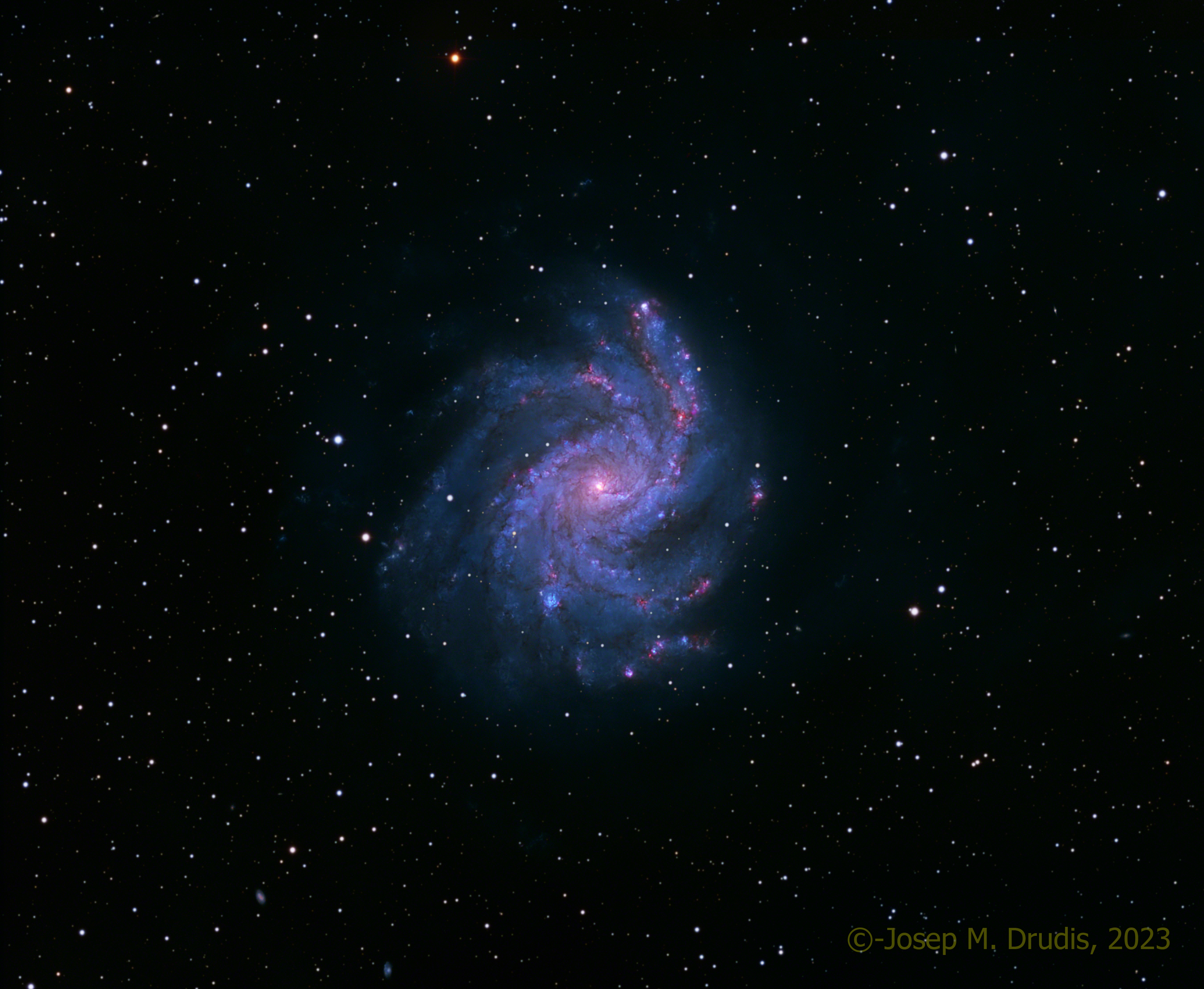Click on the image for a full resolution version
 See this image also on Instagram
See this image also on Instagram
NGC 6946 is a face-on spiral galaxy located 25 Mly away, on the border between the constellations Cepheus and Cygnus. This galaxy is located very close to the galactic plane and therefore, it is seen through a significant amount of dust that, due to the easier dispersion of the blue light, reddens its color. The “natural” reddish color and the “de-reddened” bluish color can be seen in the images. This galaxy has been thoroughly studied. Just as Messier 101, NGC 6946 does not belong to the Local Group, but to the Virgo Supercluster. One conspicuous structure that has been object of debate is the bluish (even in the “natural” image) blob that can be seen on the lower half of the galaxy. Theorized by Hodge in 1967 as a possible SNR, as well as, in 1999, identified by Larsen as a young massive cluster, but now, Efremov, in 2016, proposed that the “blob” might be a dwarf galaxy that moves in front of NGC 6946. No final determination has been done yet.
The Fireworks galaxy is considered to be a starburst galaxy, with a very high rate of star formation and destruction. In the one hundred years that go from 1917 to 2017, ten supernovae have been detected. This accounts for the galaxy’s nickname of “Fireworks Galaxy”. A curious event took place in 2009, a star in NGC 6946 increased its brightness significantly, but not enough to be considered a supernova. In 2015, it faded very rapidly and disappeared from sight. This star, called N6946-BH1, was previously a yellow supergiant that collapsed and formed a black hole. A faint and fading IR emission can be still detected and it was interpreted as the emission of material falling onto the remaining black hole.
Additional Information
Object
Name(s): NGC 6946. Fireworks Galaxy
Type: Spiral galaxy
RA: 20h 34m 52s
Dec: +60º 09’ 14”
Constellation: Cepheus and Cygnus
Size (arcmin): 16×12 arcmin
Magnitude: +9.2
Distance: 25.2 Mly
Image
Date: 2022-05-05 to 2022-06-07
Location: Curiosity2 Observatory, New Mexico Skies, Mayhill, NM, USA
Size (arcmin): 27×22 arcmin
Telescope: 24” (61 cm) f/6.5 Reflector
Camera: FLI PL16803 (4096x4096pix)
Guiding: Astrodon MonsterMOAG off-axis guider
Total exposure: 21 hours (L: 8h; Ha: 4h; RGB: 9h)
Processing: CCDStack, PixInsight (one step) and Photoshop CC 2023

